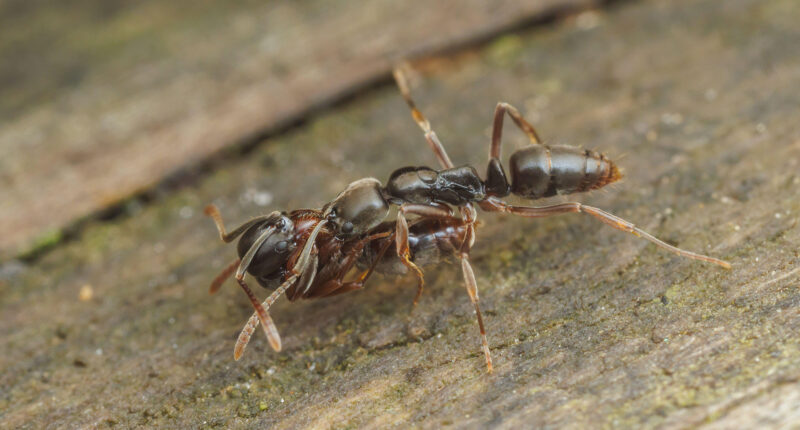AN invasive species of carnivorous ants has been spreading in several states, leading to fears of attacks on humans.
Asian needle ants will reach their yearly peak numbers in July and August; however, spotting them is easier said than done.


The bugs are small and blend in well with their surroundings, with most people noticing them after being stung.
Benoit Guénard, a professor of ecology and entomology at the University of Hong Kong, drew a vivid comparison when explaining the pain caused by these ants: “Imagine somebody inserting a needle directly into your flesh,” as reported by USA Today.
“It’s a very sharp, acute pain, but it’s quite local.”
Tracking the ants is difficult, but researchers say the spread shouldn’t be ignored.
“They’re pretty widespread on the East Coast,” said Daniel Suiter, professor of urban entomology at the University of Georgia.
“If you live in an area which is dominated by hardwood trees, there’s a good chance there are Asian needle ants underfoot.”
While the sting is quite painful for most people, for some, it can be life-threatening.
Others can have pain that takes hours to subside.
Brachyponera chinensis, loosely translated as “short, wicked ant from China, is actually native to China, Japan, and the Koreas.
The presence of these ants in the US dates back to 1932 when they were first discovered in Decatur, Georgia. However, it wasn’t until the last two decades that they garnered recognition as a significant pest as their population started spreading in the southeastern regions of the country.
Now, the bugs can be found as far north as Connecticut and as south as Florida, according to the website AntMaps.
The ants look for prey such as flies, beetles, grasshoppers, and termites.
Unlike other ants, they don’t lay down scent trails, which makes it harder to track them back to their colonies to eradicate them.
“Most ants are in-your-face invasive, they lay a pheromone trail to get to food. You can’t miss an ant trail that’s half an inch wide,” said Suiter.
Symptoms of anaphylaxis
- Skin reactions include hives, itching, and flushed or pale skin.
- Low blood pressure (hypotension).
- Constriction of the airway, wheezing, and difficulty breathing.
- Swollen tongue or throat.
- Weak and rapid pulse.
- Nausea, vomiting, or diarrhea.
- Dizziness or fainting.
- Psychological symptoms, such as a feeling of impending doom.
Source: US Department of Agriculture
“These remain hidden.”
The ants live in colonies in dead leaves, rotten logs, firewood, and mulch.
They can live near residential areas, including parks, and even urban areas, under railroad ties, logs, bricks, and pavers.
Theresa Dellinger, a diagnostician at the insect identification lab at Virginia Tech, highlighted that people commonly fall victim to these ants’ stings while working in their gardens.
“Nobody likes to be putting in their bedding plants and then suddenly have unexpected pain.”
If you’re sensitive to bug bites, Delliinger recommends carrying an EpiPen.

















